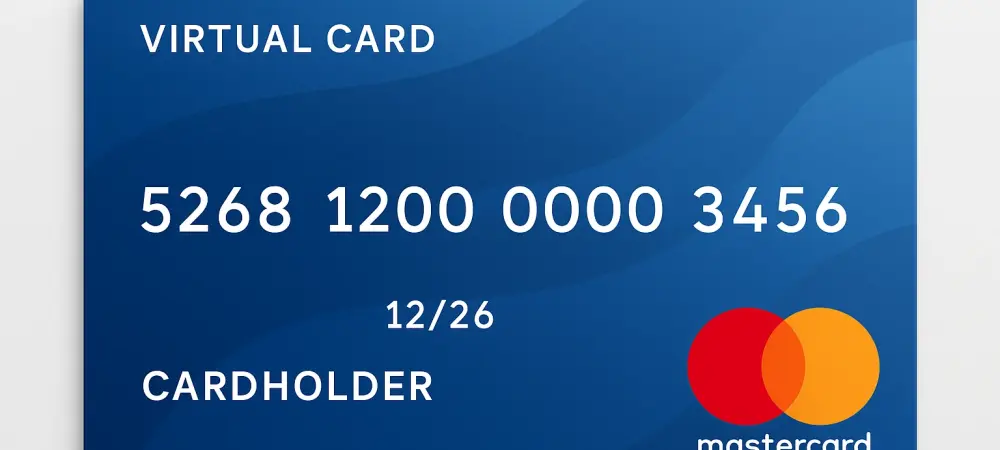In today’s digital age, businesses face the ongoing challenge of managing corporate expenses efficiently and securely. With indirect expenditures making up about 20% of a corporation’s total spend, managing these numerous small transactions becomes critical. The collaboration between Mastercard and Pay4You introduces a compelling solution that revolutionizes how businesses handle these financial operations, emphasizing transparency, control, and efficiency.
Unpacking Virtual Card Integration
The core principle of virtual card integration lies in the digital transformation of traditional payment methods. This technology enables businesses to convert account-to-account payments into card transactions, offering improved financial visibility and streamlined operational processes. The integration of Mastercard’s Virtual Card Network technology within Pay4You’s platform signifies a strategic endeavor to optimize tail spend management, which often involves a myriad of small, high-frequency transactions.
In the broader technological framework, virtual cards play a significant role in automating and digitizing financial workflows. This development aligns with the increasing demand for digital solutions that enhance operational efficiency and reduce costs, reinforcing the ongoing shift toward digitized financial processes.
Key Features Driving the Shift
Security and Authentication
Security remains paramount in financial technology, and virtual card integration excels in this domain with robust features that ensure secure transactions. Virtual cards offer dynamic card numbers that mitigate the risk of fraud, providing an additional layer of protection. Such security measures are critical in maintaining the integrity of transactions and safeguarding sensitive financial information.
Enhancing Automation and Transaction Efficiency
Automation is at the heart of virtual card integration, significantly improving transaction efficiency. By automating the payment process, completion times are reduced, and the chances of human error are minimized. Moreover, the technology allows for seamless transactions, ensuring acceptance while expanding card usage in previously unexplored payment areas, resulting in improved back-office operations and user experience.
Recent Innovations and Trends
The continual evolution of virtual card technology is noticeable in the latest trends and innovations shaping the field. One such trend is the increased emphasis on digitization within B2B payment platforms, where virtual cards are playing a pivotal role. As these innovations gain traction, shifts in consumer and industry behavior reflect an inclination toward seamless, digital solutions.
Furthermore, strategic collaborations like that of Mastercard and Pay4You showcase a commitment to modernizing corporate expenditure handling, compelling businesses to adapt to new ways of managing financial processes efficiently.
Practical Applications and Industry Implementation
Virtual card integration finds practical applications across various industries. Sectors such as healthcare, retail, and corporate business settings embrace this technology to streamline their financial operations. One notable implementation is the integration facilitated by Mastercard and Pay4You, which enhances card acceptance across Europe, optimizing financial processes and digital spending solutions.
These applications demonstrate the versatility of virtual card integration, as businesses leverage its capabilities to automate and optimize spending procedures effectively.
Overcoming Challenges and Limitations
Despite its benefits, virtual card technology encounters specific challenges. Technical hurdles, such as achieving universal card acceptance and addressing regulatory issues, are focal points that could impede widespread adoption. Market obstacles also exist, as businesses navigate uncharted territories in digitized financial processes.
Ongoing efforts are directed at mitigating these limitations, as industry players seek to refine the technology and make it more accessible. Advancements in regulatory compliance and interoperability are essential to overcoming these challenges.
Projecting Future Developments
Looking ahead, virtual card integration is poised for significant advancements. The potential for future breakthroughs is vast, with the promise of more sophisticated features that could further enhance automation and security. These developments could transform financial management across industries, impacting society by facilitating more efficient and secure transactions. The long-term impact of virtual card technology hinges on its ability to evolve and adapt to emerging trends, all while continuing to prioritize security and efficiency in financial processes.
Comprehensive Review and Considerations
The technology of virtual card integration has made notable strides in optimizing corporate expenditure management. While challenges remain, the potential for future enhancements is vast. As businesses adopt and integrate this technology, they navigate an evolving landscape, focusing on increased efficiency and security in their financial processes. Overall, virtual card integration plays a transformative role, promising continued advancements in the arena of digital payment solutions.

